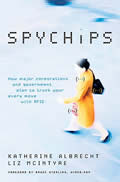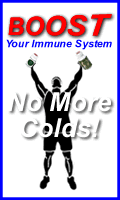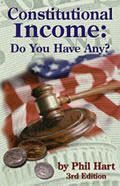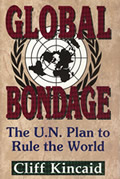Other Guest Articles:
Jury Rights! Jury
Nullification
Constitutional
Tools No
Longer Valid
HOW BUREAUCRACY FACILITATES CRIME
By Cori Brackett
December
6, 2005
NewsWithViews.com
Recently, the British science publication, Nature, reported that 15% of American researchers admitted to adjusting their conclusions to be more in line with their sponsor's expectations. If this is how many researchers are admitting to skewing their research to please their sponsors, how many are doing so and not admitting it?
It seems that industry-funded studies have more to do with public relations than they do with science. As a result, newspapers are filled with reports of scandals regarding the safety of various pharmaceuticals. These drugs had already been presented as safe and approved for use by the FDA. Unfortunately, this is not a new phenomenon. In 1996, the FDA removed all restrictions of use from the artificial sweetener aspartame, which was first approved for use only in dry goods as early as 1981. This decision follows a long and questionable history of the product, complete with challenges and apparent cover-ups.
According to pharmaceutical company and original aspartame manufacturer, GD Searle, aspartame was discovered in 1965 when a researcher licked his fingers in a lab test.
By 1970, neuroscientist, Dr. John Olney, was already finding that when mice were fed aspartic acid (one of the breakdown components of aspartame), they were developing brain lesions.
That same year, GD Searle approached the respected researcher, Dr. Harold Waisman, to conduct a study on the safety of aspartame. This early study, known as The Waisman Study, used seven monkeys which were fed aspartame with milk. Of these seven monkeys, one died and five had grand mal seizures.
Three years later, GD Searle applied to the FDA for approval of aspartame and, among the over one hundred studies submitted, neither the Waisman Study nor the Olney study was included for review.
Pharmaceutical researcher and FDA employee, Dr. Martha Freeman, found the studies that were actually submitted by Searle to be inadequate. She recommended that further studies be completed on aspartame proving its clinical safety before the sweetener is marketed to the public.
The FDA heeded this warning, at least about advertising. The next year, in 1974, the FDA approved aspartame for limited use, but requested that it not be marketed.
This approval lasted for only a year. By 1975 Searle withdrew aspartame and agreed to an inquiry into its safety. This is after continued questions of impropriety prompted the FDA to examine 25 key studies conducted on aspartame and three other drugs with similar discrepancies. This was the last year in which any study that was pivotal to the approval of aspartame occurred, including any subsequent study funded by the manufacturer for the purpose of demonstrating aspartame�s safety.
When the FDA appointed task force had concluded their investigation, they released a 500 page, scathing report citing many problems with the sloppy research, 'manipulated' test data, and falsely reported outcomes. Subsequent to the release of this task force report, the FDA took a second look with yet another task force, this time to look at three of the key studies on aspartame. This task force was lead by veteran investigator Dr. Jerome Bressler.
An often-used technique in PR is to employ (with the thin distance of a third-party name) "experts" or "authority figures" that will affirm product safety regardless of evidence. In this case, the figures hired didn�t seem to do much of anything. Representatives of GD Searle convinced the FDA to allow them to hire UAREP (Universities Associated with Research and Education in Pathology), a private agency, to validate the other aspartame studies for a fee of $500,000.00.
UAREP completed their investigation two years later in 1978, concluding that the slides they were reviewing were, in fact referring to those mentioned in the tests. No evaluation was done regarding the quality of the tests or of the research.
During this �re-evaluation� in 1977, the chief counsel for the FDA asked the US Attorney's office to begin proceedings with a grand jury to investigate whether GD Searle should be charged for concealing material facts and making false statements regarding the safety tests of aspartame and the other pharmaceuticals. This was also when the US attorney in charge of the investigation began employment negotiations with the law firm representing GD Searle.
Such instances of an apparent revolving door of employment between the public and private sectors can often create flagrant conflicts of interest. A crime may well have been committed, but this is when justice takes a back seat to corruption. The charges were allowed to expire through the Statute of Limitations.
While GD Searle was flailing amidst possibilities of federal charges, the company hired Donald Rumsfeld as its new CEO. Many of his colleagues from Washington were brought in to fill top management positions within the company.
Searle's troubles were not over, however. Dr. Bressler's report was released shortly after. It cited numerous problems with the aspartame studies they looked at, including removal of tumors from study animals who were then placed back into the study and one "magically resurrecting" a rat, who was reported to be alive at week 88, dead from weeks 92 through 104, alive again at week 108, and finally dead at week 112.
By the time Ronald Reagan was sworn in as 4oth president of the United States, the approval process for aspartame was into its second decade. Reagan's transition team appointed a new FDA commissioner, Arthur Hull Hayes. Among the transition team members was Donald Rumsfeld.
Months after being appointed as FDA Commissioner, Hayes approved aspartame for use in dry foods. It is now in over 5000 products and consumed by millions of people worldwide. In opening this pandora's box and approving aspartame, Hayes ignored section 403(c)(3) of the Food, Drug and Cosmetic Act which says that a food additive should not be approved if tests are inconclusive. This approval also violates The Delaney Amendment which forbids any approval of a food additive for human consumption if it is found to cause tumors in animals.
Independently funded studies continue to question aspartame's safety. As recently as this year, one study, The Razzini Study, from Italy, reaffirmed the danger of aspartame, finding lymphomas, leukemia and brain tumors.
Most of us have grown up believing that government bodies like the FDA are set up as supposed guardians of the public safety. Not only are we expected to trust these entities, we allow them to ban and prohibit substances they deem unsafe. Such power is not only undeserved, but ill-conceived. An entity�s worth in this matter should only be judged by the quality of the information it provides. Otherwise, with too much power, the organization becomes a spawning ground for such criminal behavior outside and inside this system. Meanwhile, we�re getting drugs that have been approved based primarily upon the success or failure of its manufacturer�s ability to subvert authority or confuse the public. Instead, with the right information, we could be given the tools to retake responsibility for our own health and for our very own lives.
� 2005 Cori Brackett - All Rights Reserved
Sign Up For Free E-Mail Alerts
E-Mails are used strictly for NWVs alerts, not for sale
Cori Brackett is one of the producers of the documentary, Sweet Misery: A Poisoned World, which explores the harmful effects of aspartame and how it was passed through the FDA. Sweet Misery was born as a result of Cori's own diagnosis of multiple sclerosis, combined with her longtime consumption of aspartame-containing products.
A freelance writer and co-owner of Sound and Fury Productions, Cori is also the author of Through the Shadows, an exploration in poetry and prose -- a book designed to remove what alienates the sick from the healthy. She lives in Tucson, Arizona
Web Site www.soundandfury.tv/
E-Mail: cori@soundandfury.tv
According
to pharmaceutical company and original aspartame manufacturer, GD Searle,
aspartame was discovered in 1965 when a researcher licked his fingers
in a lab test.












